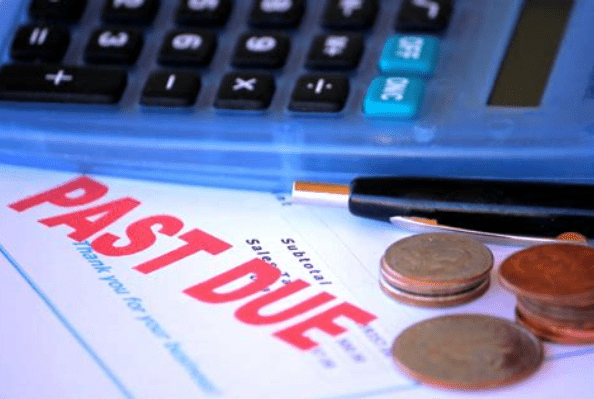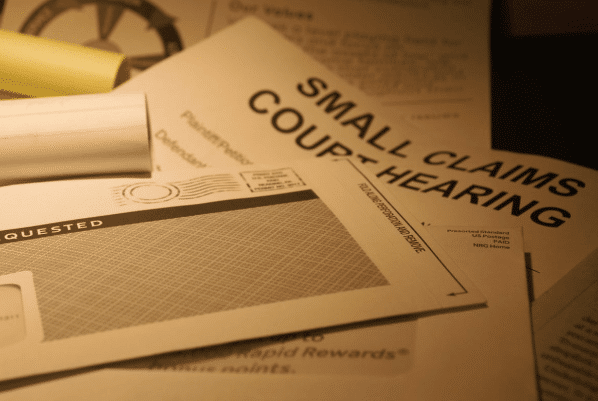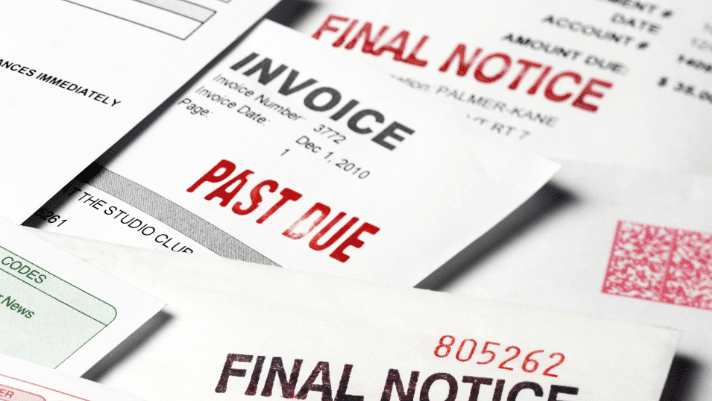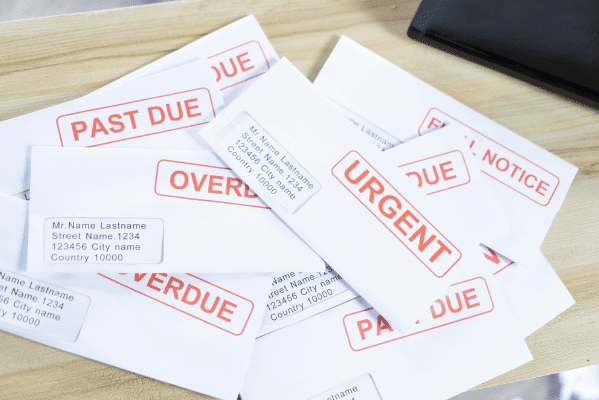If you’re facing a debt lawsuit in Utah, it’s crucial to respond within 21 days to avoid default judgment. This response involves filing a written Answer where you address each claim from the Complaint and assert affirmative defenses. Utilizing ZumaZip streamlines this process, enabling a swift response in just 15 minutes, ultimately increasing your chances of winning the lawsuit.
Facing a debt lawsuit can indeed be a challenging situation. If the plaintiff prevails, potential consequences may include wage garnishment or access to bank accounts for debt recovery. However, timely and appropriate responses to such lawsuits can mitigate these risks.
This publication aims to streamline the process and provide essential insights for individuals navigating debt lawsuits in Utah, adhering to relevant state laws governing debt collection procedures.
Certainly, here’s a more professional tone for your instructions:
“Guidelines for Addressing a Debt Collection Case in Utah
When served with court documents via certified mail, typically comprising a Summons and Complaint, it indicates legal action regarding a debt. These documents may alternatively be delivered by a process server.
In a debt collection case, the Summons serves to inform you of the lawsuit and the involved parties—individuals or entities. Conversely, the Complaint delineates the specific allegations against you.
Utah mandates a response deadline for debt lawsuits, as outlined in Rule 12(a) of the Utah Rules of Civil Procedure:
“Unless otherwise stipulated by law or court order, a defendant must furnish a response within 21 days following complete service of the summons and complaint within the state, and within 30 days following complete service outside the state.”
Essentially, this stipulation means you have 21 days from receipt of the Summons and Complaint to submit your Answer to Utah courts. Typically, responding with an Answer document constitutes the initial course of action in contesting a debt lawsuit.
You can respond to each claim with one of these three options:
- Admit—like saying, “This is true.”
- Deny—like saying, “Prove it.”
- Deny due to lack of knowledge—like saying, “I don’t know.”
Let’s delve into each step further.
Feel free to reach out if you have any questions or need further assistance!”
1. Responding to Each Claim in the Complaint
Addressing a Complaint may initially appear daunting, but the process is straightforward. Begin by thoroughly reviewing the Complaint and determining your response to each numbered claim. The initial segment of your Answer should comprise a numbered list wherein you address each claim from the Complaint sequentially.
You have three response options for each claim:
- Admit—Acknowledging the claim as true.
- Deny—Challenging the claim, prompting the plaintiff to provide evidence.
- Deny due to lack of knowledge—Stating insufficient information to confirm or refute the claim.
Legal counsel often advises denying as many claims as feasible in your Answer. In debt litigation, the burden of proof rests with the plaintiff, necessitating submission of evidence to substantiate each denied claim. If the plaintiff lacks the requisite documentation, they are inclined to dismiss the case rather than pursue it further.
For instance:
Example: In a Utah lawsuit initiated by Chase Bank against Jason, alleging a $2,600 debt default two years prior, Jason discovers discrepancies in the debt balance stated in the Complaint. Upon scrutiny, Jason refutes most of the allegations in his Answer document. Subsequently, upon review of their records, Chase Bank realizes the lack of evidentiary support for their claims, prompting them to dismiss the case.”
This explanation provides a detailed and professional approach to responding to each claim in the Complaint.
2.Asserting Affirmative Defenses
Once you’ve addressed each claim in the Complaint, the subsequent section of your Answer document involves asserting affirmative defenses.
An affirmative defense constitutes a legal argument indicating reasons why the plaintiff should lose the case, even if their claims are substantiated. Below are common affirmative defenses applicable to debt collection cases:
- The account associated with the debt is not yours.
- The contract has been terminated, relieving you of any obligation to the creditor.
- The statute of limitations has expired. In Utah, the statute of limitations for debt collection is six years, prohibiting lawsuits for debts inactive for six years or more.
- The debt has been paid or waived.
- Partial payment has been made towards the debt.
- As a co-signer, you were not adequately informed of your rights.
These examples represent affirmative defenses recognized by courts. Importantly, an inability to pay the debt does not constitute a legal defense.
Illustrative Example: Susan, facing a lawsuit for an aged debt in Utah, discovered the existence of the debt only upon being sued. Upon closer examination, Susan noted no payments made on the account for over eight years. Utilizing ZumaZip to prepare her Answer document, Susan cited the expired statute of limitations as one of her affirmative defenses. The debt collector presumed her unawareness of legal statutes like the limitations period. Ultimately, the court ruled in Susan’s favor, resulting in her successful defense.”
This explanation outlines the concept of affirmative defenses and provides examples applicable to debt collection cases while maintaining a professional tone.
3.Filing the Answer with the Court and Serving the Plaintiff
Once you’ve prepared your Answer document with responses and affirmative defenses, the next step is filing it with the court. This process may seem challenging to some consumers. If you’re unrepresented by legal counsel in Utah, the courts mandate filing the Answer either by mail or in person. Here’s a simple guide:
- Print two copies of your Answer.
- Send one copy to the court.
- Send the other copy to the plaintiff’s attorney.
Both the plaintiff’s and court’s addresses should be provided in the Summons and Complaint received via mail. The attorney’s address typically appears on the top left of the first page, while the court’s address is usually stated in the initial two paragraphs.
Note on Filing Fees in Utah: While Utah doesn’t impose fees for filing an Answer in response to debt collection lawsuits, there might be other associated filing fees if additional legal actions are pursued within the case. For instance, filing a counterclaim against the debt collector incurs a fee.
Click here to learn more about civil filing fees in Utah.
Beware of Tactics Employed by Debt Collectors: Debt collectors and their legal representatives sometimes employ questionable strategies to secure a favorable outcome, such as:
- Legalese: Using complex terminology, known as legalese, can intimidate individuals and obscure comprehension. Familiarize yourself with legal terms using online resources to mitigate confusion.
- Serving before Filing: Some Utah debt collectors serve the defendant prior to filing with the courts, creating challenges in accessing case details. Pursuant to Utah’s Rules of Civil Procedure, this practice is permissible but can complicate matters for defendants unfamiliar with legal proceedings. Wait ten days after receiving the Summons and Complaint before contacting the court for your case number to navigate this situation effectively.
Avoiding Default Judgments: In Utah, approximately 50% of cases pertain to debt collection, amounting to roughly 54,000 annually. Alarmingly, about 90% of these cases result in default judgments against debtors who fail to file an Answer. Contrary to common misconceptions, seeking legal representation or navigating the court system independently is feasible.
According to Utah’s Rules of Civil Procedure, Rule 3(a), this isn’t illegal.
Introducing ZumaZip: ZumaZip facilitates self-representation in legal proceedings, offering comprehensive resources to respond to debt collection lawsuits. With over 50,000 consumers served, ZumaZip empowers individuals to navigate the legal process effectively.
Frequently Asked Questions:
- Can I Sue My Debt Collector? Yes, filing a counterclaim against the creditor is possible, especially if the Fair Debt Collection Practices Act has been violated.
- Can You Settle a Debt After Being Served? Yes, settlements are common post-lawsuit filing, often negotiated during pre-trial conferences or mediation.
- What to Do If a Debt Collector Sues You? Respond to the lawsuit by filing an Answer within the designated timeframe, typically 21 days.
- How Long Can a Creditor Collect on a Debt in Utah? Statutes of limitations vary based on the debt type, ranging from 4 to 8 years.
- What Percentage Do Creditors Usually Settle For? Debt negotiation typically results in settlements ranging from 40% to 80% of the original debt.”
This comprehensive guide emphasizes the necessary steps to respond to a debt collection lawsuit in Utah, addressing common concerns and providing actionable insights.
Can Utah Debt Collectors Take You to Court?
Yes, debt collectors can indeed take legal action against you for unpaid debts. Many consumers are unaware of this until they receive legal notices. It’s a misconception that debts can be avoided indefinitely. Creditors have the right to pursue legal recourse within the statute of limitations.
What Happens When You Receive a Summons for Debt?
Receiving a Summons for debt signifies that you are being sued. Alongside the Summons, you should also receive a Complaint document. It’s imperative to respond to the Complaint by filing an Answer with the courts and serving it upon the plaintiff. ZumaZip offers assistance in this process.
How to Respond to a Debt Lawsuit Without a Lawyer?
Responding to a debt lawsuit without legal representation can be daunting but feasible. Utilize resources provided by your state court’s website, such as templates for filing responses. Alternatively, ZumaZip offers a pre-drafted Answer that can be tailored to your specific case. With many lawsuits involving debts under $1000, hiring an attorney with a $3000 retainer may not be financially practical. ZumaZip provides a cost-effective and stress-free alternative for self-representation.
What Happens When Someone Sues You and You Have No Money?
Being sued for a debt when financially strained doesn’t absolve one of the obligation. In the event of a loss in the lawsuit, the debt may escalate due to added attorney fees. Furthermore, the creditor retains the right to pursue debt collection for up to eight years, during which garnishment of income and placing liens on assets are potential consequences.
How Many Days Do You Have to Respond to a Lawsuit?
In Utah, if served within the state, you have 21 calendar days to respond to a lawsuit upon receiving the Summons and Complaint. If served outside the state, the response period extends to 30 days. Failure to respond within the stipulated timeframe often results in automatic loss of the case.
What Happens If You Ignore a Lawsuit?
Ignoring a debt lawsuit exacerbates the situation rather than resolving it. Consequences include:
- Automatic loss of the case via default judgment within the 21–30 day response window.
- Incurred attorneys’ fees, even without legal representation.
- Wage garnishment, allowing the opposing party to seize 25% of your paycheck.
- Placement of liens on property or assets, prioritizing debt repayment upon sale.
Ignoring legal notices only compounds financial liabilities and should be addressed promptly to mitigate adverse outcomes.
How to Answer a Summons for debt collection in all 50 states
Here’s a list of guides on how to respond to a debt collection lawsuit in each state:
What is ZumaZip?
ZumaZip is a convenient solution designed to streamline your response to a debt collection lawsuit. Here’s a breakdown of what you can expect when you use ZumaZip:
Firstly, you’ll access our user-friendly web application, which guides you through the process step by step. You’ll be prompted to answer a series of questions related to your specific situation. Once you’ve completed the questionnaire, you have the option to either print out the finalized forms and mail them to the appropriate courts yourself, or you can opt to utilize ZumaZip’s services to file them on your behalf. Additionally, if you choose this option, an attorney will review your document for added peace of mind.
If you’re seeking guidance on how to effectively respond to a debt collection lawsuit, ZumaZip can provide the assistance you need. Feel free to explore our FAQs for more information on what ZumaZip has to offer.
What if I haven’t been sued yet?
If you’ve only received a collections notice, but not a lawsuit, the best way to respond is with a Debt Validation Letter. When a debt collector contacts you in any way, whether it’s by phone or mail, you can respond by formally requesting a debt validation with a Debt Validation Letter . This letter notifies the collector that you dispute the debt and forces them to provide proof you owe the debt. They can’t call you or continue collecting until they provide validation of the debt. This flowchart shows how you can use a Debt Validation Letter to win.
Get started with a Debt Validation Letter here.
How to Answer a Summons for debt collection in all 50 states
Here’s a list of guides on how to respond to a debt collection lawsuit in each state:
- Alabama
- Alaska
- Arizona
- Arkansas
- California
- Colorado
- Connecticut
- Delaware
- Florida
- Georgia
- Hawaii
- Idaho
- Illinois
- Indiana
- Iowa
- Kansas
- Kentucky
- Louisiana
- Maine
- Maryland
- Massachusetts
- Michigan
- Minnesota
- Mississippi
- Missouri
- Montana
- Nebraska
- Nevada
- New Hampshire
- New Jersey
- New Mexico
- New York
- North Carolina
- North Dakota
- Ohio
- Oklahoma
- Oregon
- Pennsylvania
- Rhode Island
- South Carolina
- South Dakota
- Tennessee
- Texas
- Utah
- Vermont; Vermont (Small Claims court)
- Virginia
- Washington
- West Virginia
- Wisconsin
- Wyoming
Guides on how to beat every debt collector
Hey there! Facing off against a debt collector can feel like a daunting challenge, but fear not! We’re here to help you navigate through it all with our handy guides designed to assist you in beating every debt collector you encounter. Whether you’re facing a new lawsuit or dealing with a persistent collector, we’ve got your back. Stay positive, stay informed, and let’s tackle this together!
- Absolute Resolutions Investments LLC
- Accredited Collection Services
- Alliance One
- Amcol Clmbia
- American Recovery Service
- Asset Acceptance LLC
- Asset Recovery Solutions
- Associated Credit Services
- Autovest LLC
- Cach LLC
- Cavalry SPV I LLC
- Cerastes LLC
- Colinfobur
- Covington Credit
- Crown Asset Management
- CTC Debt Collector
- Cypress Financial Recoveries
- Delanor Kemper & Associates
- Eagle Loan of Ohio
- Educap
- Estate Information Services
- FIA Card Services
- Forster & Garbus
- Freshview Solutions
- Fulton Friedman & Gullace LLP
- Harvest Credit Management
- Howard Lee Schiff
- Hudson & Keyse LLC
- Integras Capital Recovery LLC
- Javitch Block
- Jefferson Capital Systems LLC
- LVNV Funding
- Mannbracken
- Mariner Finance
- Medicredit
- Michael J Adams PC
- Michael J Scott
- Midland Funding LLC
- Mullooly, Jeffrey, Rooney & Flynn
- Mountain Land Collections
- MRS Associates
- National Collegiate Trust
- Nationstar Foreclosure
- Northstar Capital Acquisition
- NCEP LLC
- NRC Collection Agency
- OneMain Financial
- Palisades Collection LLC
- Pallida LLC
- Paragon Revenue Group
- Pinnacle Collections Agency
- PMAB LLC
- Portfolio Recovery Associates
- Provest Law
- PYOD LLC
- Reunion Student Loan Finance Corporation
- Revenue Group
- Regents and Associates
- RSIEH
- Salander Enterprises LLC
- Second Round Sub LLC
- Security Credit Services
- Sherman Financial Group
- Suttell and Hammer
- T-Mobile
- Transworld Systems
- Tulsa Teachers Credit Union
- UCB Collection
- Velo Law Office
- Velocity Investments
- Waypoint Resource Group
- Weinberg and Associates
- Wolpoff & Abramson
Settle your medical debt
Having a health challenge is stressful, but dealing medical debt on top of it is overwhelming. Here are some resources on how to manage medical debt.
- Am I Responsible for My Spouse’s Medical Debt?
- Do I Need a Lawyer for Medical Bills?
- Do I Need a Lawyer to Fight Medical Bill Debt?
- Does Bankruptcy Clear Medical Debt?
- How Much Do Collection Agencies Pay for Medical Debt?
- How to Find Medical Debt Forgiveness Programs
- Is There a Statute of Limitations on Medical Bills?
- Medical Debt Statute of Limitations by State
- Summoned to Court for Medical Bills — What Do I Do?
- Summoned to Court for Medical Bills? What to Do Next
Stop calls from Debt Collectors
Do you keep getting calls from an unknown number, only to realize that it’s a debt collector on the other line? If you’ve been called by any of the following numbers, chances are you have collectors coming after you, and we’ll tell you how to stop them.



































